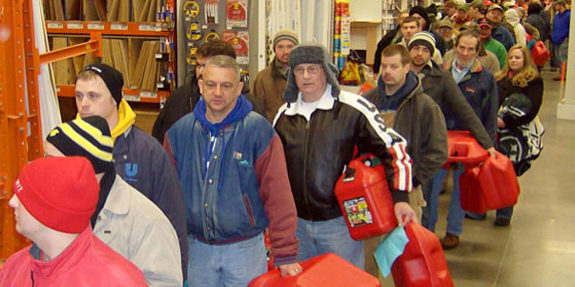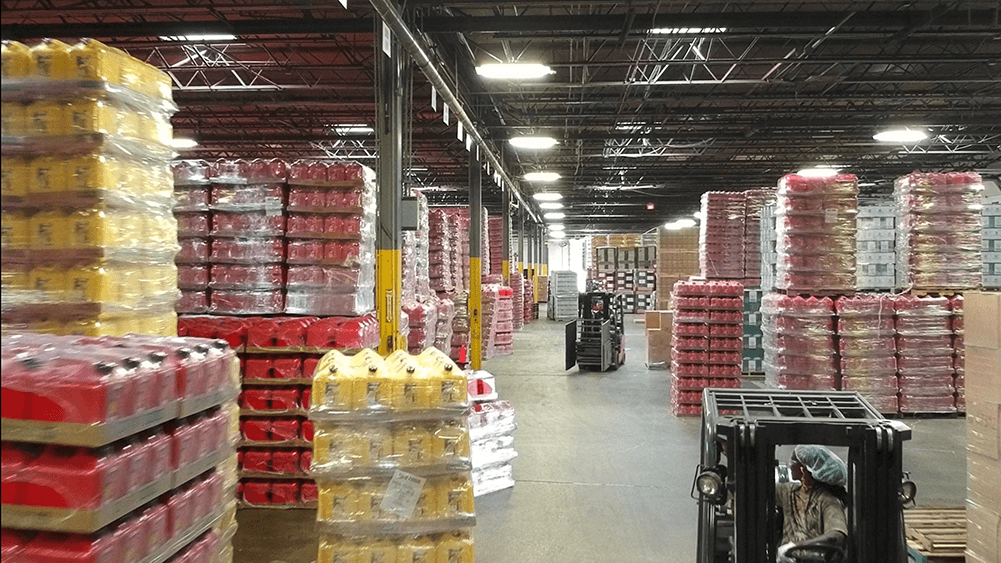Portable consumer fuel containers are a familiar fixture in American lives – from the nostalgic metal jerry cans to the now standard red gasoline cans, along with the yellow and blue plastic diesel and kerosene cans. These portable consumer fuel containers are vital to safely transport these fuels and every year portable consumer fuel containers are used safely billions of times. These products also play a critical and irreplaceable role in disaster response and recovery.

Over the years, numerous safety and environmental features have been added to the containers, most significantly: child-resistant closures, flame mitigation devices and environmental improvements that reduce spillage and do not allow vapors to escape. The industry was actively involved in each of these changes.
There are several levels of oversight of our Industry. We join with technical experts, consumer representatives and the Consumer Product Safety Commission (CPSC) to develop standards under the ASTM International umbrella. Our Technical Subcommittee F15.10 (“Standards for Flammable Liquid Containers”) is responsible for:
ASTM F852: Standard Specification for Portable Gasoline, Kerosene and Diesel Containers for Consumer Use
ASTM F839: Standard Specification for Cautionary Labeling of Portable Gasoline, Kerosene and Diesel Containers for Consumer Use
ASTM F2517: Standard Specification for Determination of Child Resistance of Portable Fuel Containers for Consumer Use
ASTM F3326: Standard Specification for Flame Mitigation Devices on Portable Fuel Containers
Under the Consumer Product Safety Act (CPSA) these are voluntary consumer product safety standards (s7(b)). Compliance is monitored by the CPSC.
 The 2008 “Children's Gasoline Burn Prevention Act” (16 cfr 1460) adopts ASTM F2517 in a mandatory consumer product safety rule to parallel provisions of the Poison Prevention Packaging Act.
The 2008 “Children's Gasoline Burn Prevention Act” (16 cfr 1460) adopts ASTM F2517 in a mandatory consumer product safety rule to parallel provisions of the Poison Prevention Packaging Act.
Standards to regulate greenhouse gas emissions from Portable Fuel Containers are mandatory in all states through either:
- The Environmental Protection Act (EPA: 40 cfr Part 59) Subpart F “Control of Evaporative Emissions for New and In-Use Portable Fuel Containers”
- California Air Resources Board (CARB) Article 6 s2467: “Portable Fuel Containers and Spouts”
Shortcuts cause hazards: examples of non compliant portable fuel containers.
The portable consumer fuel containers manufactured by members of the PFCMA meet all applicable regulations. But as the industry is committed to ensuring it is always using safe and appropriate technology, it continues to review new designs in conjunction with ASTM. The industry’s goal is to provide consumers with the safest functioning method to transport gasoline. Should a new safety standard or rule be promulgated, the industry will embrace it.
Key components of current regulations include:
- Any spout, or other venting mechanism, if any, must be designed to close automatically when not in use. This means, for example, that when a spout is not engaged for pouring it must automatically return to a closed position.
- A permeation resistant container to reduce hydrocarbon emissions to the acceptable .3 grams/ gallon/day.
- Child resistant features as outlined by the Children's Gasoline Burn Prevention Act.
- A flame mitigation device to protect the container openings from possible propagation of a flame into a flammable fuel-air mixture within the container (ASTM F3326).
